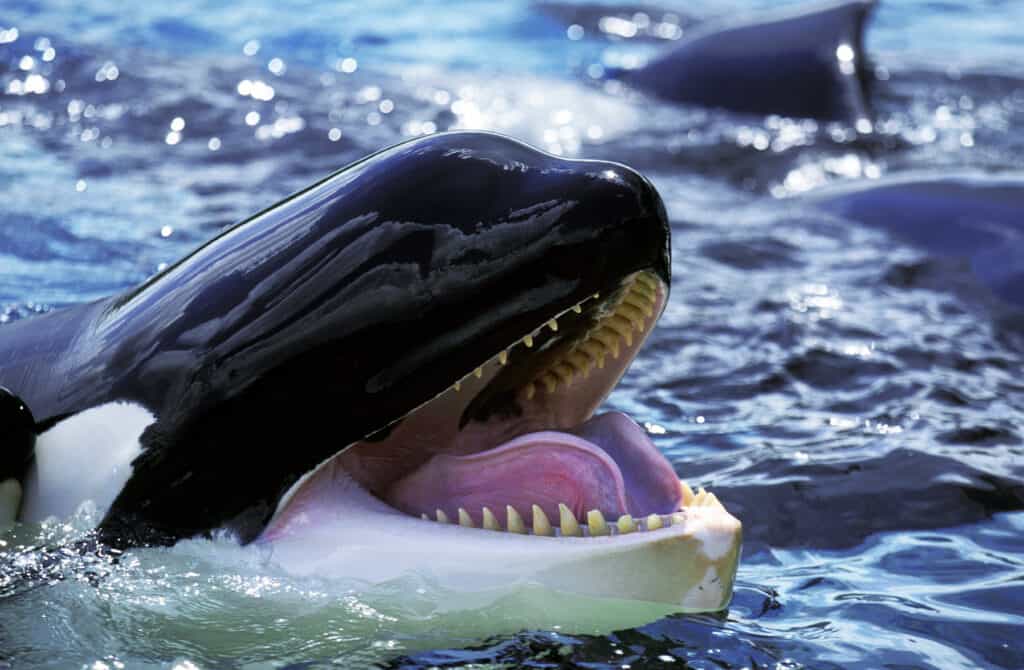Remember that video from last year of an orca tossing a sea lion 20 feet into the air? Well that whale’s got nothing on the pinniped-flipping abilities of this orca (skip to 00:29 for the action):
In this remarkable footage filmed off the coast of Victoria, Canada yesterday, a male killer whale known as T69C (which, rather aptly, sounds like the model number for a Terminator) sends a Pacific harbour seal hurtling 80 feet (20 metres) into the air with a casual flick of his tail. The footage was captured by Mike Walker, the owner of Roll. Focus. Productions, who was shooting a promotional video for whale-watching company Eagle Wing Tours when he spotted the orcas.
“We do a ton of whale watching, but this is fairly rare,” Walker told The Huffington Post. “Brett Soberg – owner of Eagle Wing – mentioned to us that it’s only the fourth time he’s seen an orca do that in about 20 years.”

According to cetacean researcher Dr Chris Parsons, what we’re seeing is likely a bit of practice. “They don’t often eat the seals [after hitting them],” he says. “But when they hit Dall’s porpoises, they do it to eviscerate them. They hit them so hard that their entrails pop out, which they leave behind after eating the muscle and blubber.”

Playing “seal baseball” is just one of a variety of hunting techniques in the orca arsenal. Killer whales living around the Antarctic coastline have been recorded swimming in a tight formation towards ice floes to create a wave that sweeps unsuspecting seals into the water, ready to be picked off by the orcas. For smaller prey items like herring, killer whales in Norway use a method called carousel feeding, which involves using air bubbles to herd a baitball of fish to the surface, where the orcas will stun or kill them with a slap of their tail before gulping down huge mouthfuls.

Still not impressed? You should see them hunting sharks. Even the mighty great white is on the menu. Killer whales use their broad tails to create a vortex that pushes the shark to the surface. Once there, a swift slap from the tail stuns the prey and allows the orca to flip it over inducing a state called tonic immobility, which effectively leaves the shark paralysed. Yes, orcas seem to understand shark biology.

Although we like to stay clear of the negative connotations of the “killer whale” label, these apex predators sure are good at taking down their prey.








